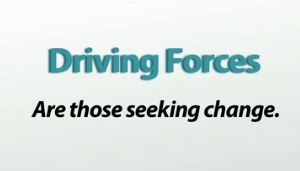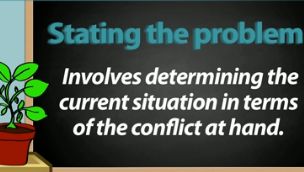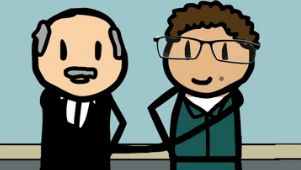Kurt Lewin's Force-Field Analysis Change Model
After you watch the video and know the material, click HERE for the quiz.
Kurt Lewin's force field analysis change model was designed to weigh the driving and restraining forces that affect change in organizations. The 'force field' can be described as two opposite forces working for and against change. In this lesson, we'll learn how to analyze the force field.
Force Field Analysis Change Model
Have you ever had that conversation with colleagues about where to dine for lunch? You and a few others want to try the new Thai place, but your coworker Jeanie and a few others want to go to the same old sandwich shop you've been going to for years. Well, Kurt Lewin's force field analysis change model describes a similar situation. The force field analysis is a method to:
- Investigate the balance of power
- Identify the key players involved in decision-making
- Identify who is for and who is against change
- Identify ways to influence those against change
In an organization, change is a bit more complicated, but just like deciding where to go for lunch, there are driving and resisting forces at work. Driving forces are those seeking change. Resisting (restraining) forces are those seeking to maintain the status quo. The goal for the driving force is to gain equilibrium, or a balance of power. Resisting forces control the status quo, while driving forces seek change.
 |
Management at Bergman's Innovative Marketing, Inc. faced a dilemma. They needed to change their marketing systems or risk losing their competitive edge. This meant that all marketing executives had to learn a new computer system and become certified to work on their accounts. The additional training and certification meant spending Saturdays in a classroom and studying in the evenings to prepare for the test.
Management (driving forces) was gung-ho about the new systems, but marketing executives (resistant forces) were miserable. They resisted putting in the extra time to train, and that manifested into resistance to change anything about their jobs. Management, on the other hand, clearly explained the reason for change. Change meant being competitive with other marketing firms. Without change, the organizational objective of profitability would not be met, and executives may lose their jobs. Management made a good point: without change, jobs may be cut.
 |
- People
- Habits
- Customs
- Attitudes
We learned how people affect change. Habits, customs and attitudes affect change as well. The marketing executives at Bergman's were used to a fairly relaxed environment. Most have been with the company for several years and consider themselves pretty secure in their positions. Since they are a tightly knit group of executives, they have habits, customs and attitudes that contribute to their arrogance. They want to maintain the status quo. Management feels differently. Change means more profitability, and that is written into Bergman's corporate objectives. But just how will management convince this resistant group of marketing execs to go with the change?
 |
How to Conduct a Force Field Analysis
The force field analysis involves:
- Stating the problem
- Defining objectives
- Determining resistant forces
- Comparing strategy against organizational objectives
Stating the problem involves determining the current situation in terms of the conflict at hand. This may also involve determining the desired state. Other things to consider are where the current situation will go if no action is taken. This is easy to explain. Bergman's lacked systems to remain competitive. Marketing execs must endure extensive training and certification to continue working on their accounts. If no action is taken - well, no systems training and certification - there will be no jobs.
 |
Determining resisting forces involves identifying negative or resistant forces to change. Marketing execs are resistant to change for many reasons. For reasons stated, the execs just don't want to change the way things are done.
Finally, we must compare strategy against organizational objectives to determine whether the strategies used are in line with the desired objectives. Bergman's management team identified their strategy of training and certifying marketing execs. It is the edge they need to compete in a marketing industry.
Eventually, after completing the force field analysis, marketing executives did get on board with training. Management strengthened the driving forces, like remaining competitive, and weakened the resistance to the inconvenience of training and studying. After much deliberation, management won. However, the training schedule was modified to allow execs to train during work hours and earn extra time off for hours spent studying and testing.
 |
In a Nutshell
Driving forces are those seeking change, while resisting forces are those seeking to maintain the status quo. Forces, whether driving or resisting, are a mix of people, habits, customs and attitudes. Lewin's force field analysis change model works by investigating the balance of power, then determining the key players involved in decision-making and devising ways to influence them to accept change. The force field analysis involves:
- Stating the problem by determining the current situation in terms of the conflict at hand. This may also involve determining the desired state. Other things to consider are where the current situation will go if no action is taken.
- Defining objectives by listing the expectations or outcomes of change. If change occurs, equilibrium, or balance of power, has been achieved.
- Determining resisting forces to identify negative or resistant forces to change.
- Comparing strategy against organizational objectives to determine whether the strategies used are in line with the desired objectives.